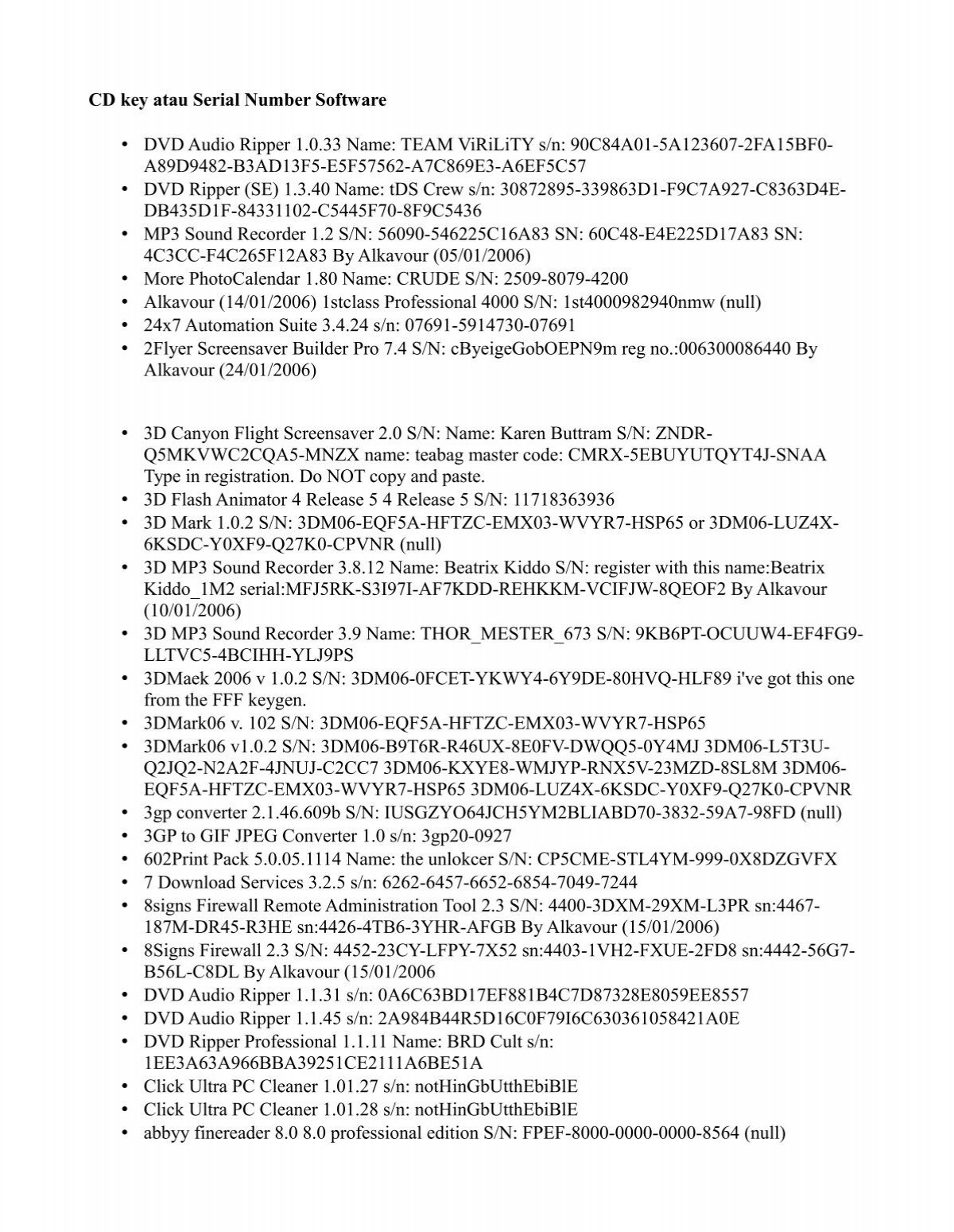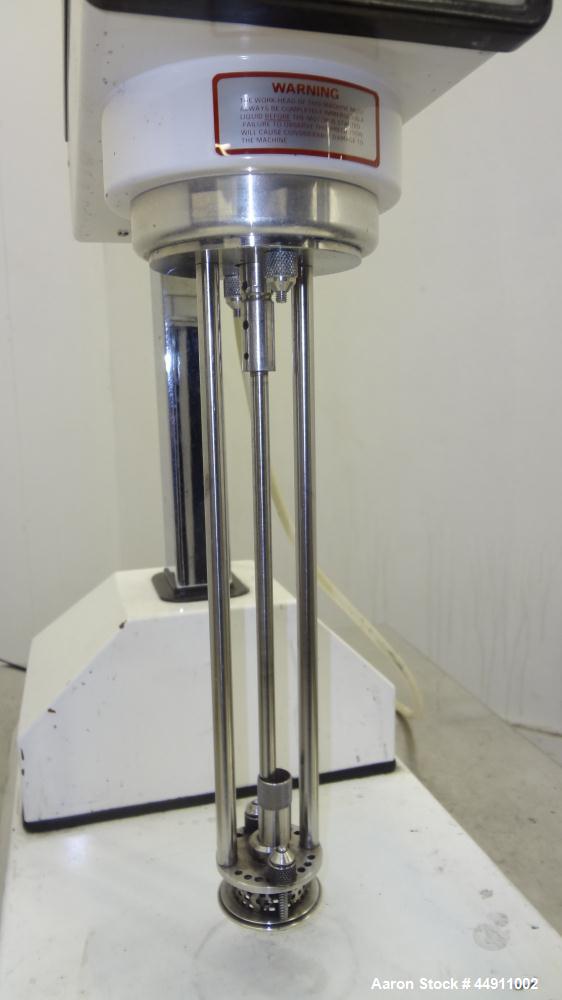The serial number for ACDSee is available. This release was created for you, eager to use ACDSee 3.1 full and without limitations. Our intentions are not to harm ACDSee software company but to give the possibility to those who can not pay for any piece of software out there. This should be your intention too, as a user, to fully evaluate ACDSee. Product keys were first introduced in the 2010 releases and since that. ACDSee 3.1 product key can be recovered; ACDSee 9.x product key can be. AutoCAD 2009 product key can be recovered; AutoCAD 2010 product key can be. AutoDesk Autocad 2017 Serial Number And Product Key Plus Crack Full Version free download here. 12-6-2010 9-14-39.
Pick a software title...to downgrade to the version you love!
ACDSee 8.1 Change Log

Acdsee 3.1 Serial Number
Find your pictures faster with the new Quick Search bar.
Finding your photos is fast and easy with the new Quick Search feature. All you have to do is type in a word (not case sensitive), and ACDSee returns matches for that word in image captions, author information, and notes. You can also choose to include any matches found in file names, keywords, categories, and folders.
More RAW file support
If you're a real enthusiast, you can analyze even more photos in their original RAW formats.
Video slide shows with custom audio.
Use the new VCD (Video Compact Disc) support to put your creative slide shows to music, and watch them on your television or PC. VCD supports NTSC/PAL, and your saved videos can be played back in any media application. Save and reuse VCD projects, and even watch a live preview of the slide show you’re working on.
Add several different slide show projects to the same CD, and conveniently burn original images to CD as well. Mix multiple audio tracks with high-resolution photo images and video into your slide shows, without the hassle of learning overly complicated software. ACDSee also lets you set your slide show to fit the length of any audio track using a handy timeline view.
Create CDs and DVDs quickly and easily.
The new Burn Basket makes creating CDs and DVDs drag-and-drop easy. Individual photos or entire folders - you name it, the Burn Basket can take it. Make hard copies of your photo collections faster than ever before, then give them as gifts to family and friends.
Improve organization by creating new folders within the Burn Basket, and update ACDSee Photo Discs on multi-session CDs and DVDs. Easily manage your disc space by checking the updated estimate of the size of the disc, and how much space will be used up by your current project.
The Burn Basket completely eliminates the need for a third-party burning tool, and can also be used to create archives and backups of your files.
More powerful editing tools
The new Photo Repair tool fixes common photo defects such as blemishes, flares, lens scratches, and other imperfections, so your treasured photo memories always look great, no matter how you choose to show them. Choose from either the Clone or Heal options to repair any area of a photo.
You can also:
Fix red-eye with a single click.
Automatically crop your selections after custom angle rotations.
Crop a selection from the Edit menu in the Viewer.
Access handy exposure warnings in the Viewer.
Use the new shortcut toolbar in the Viewer to instantly access photo editing tools.
Easily access zooming tools while viewing and editing images.
Choose from 27 new filters and effects.
Access to IPTC metadata.
Real enthusiasts can take advantage of fully integrated support for IPTC metadata, including Captions, Keywords, Categories, Credit, Origin and others. IPTC is used for standard newswire images and allows you to add keywords to your photos. Plus, keywords stay with your photos when you share them.
View and edit your IPTC information and overlay it on any photo in the Viewer, or on thumbnails in the browser. Display IPTC info in your slide shows, or sort your file lists and compare images based on IPTC data.
Improved Properties display
View more file information simultaneously in the Properties pane, such as image size in inches, number of pixels per inch, and uncompressed file size.
Add text to photos.
Write clever, humorous, or descriptive text captions, and add them to your photos just for fun. You can even add styles and special effects to the text you write, truly making your memories worth a thousand prints. Styles include talk and thought bubbles, as well as drop shadows. Add up to 13 special effects such as Blur, Ripple, Shift and Twirl.
Take advantage of improved HTML albums.
The improved HTML Album feature makes posting and sharing your photos on the Web easier than ever before. Page layout controls now have mouse-over tips you can really use. Control the look of your Web presentations by setting the delay interval for photos in your Web slide shows.
Be creative with slide shows and screen savers.
Improved mouse and keyboard functionality allow for easier pausing and scrolling through your slides. Create slide shows with associated audio files, mix multiple audios, and save time by setting the same audio, transition and caption to multiple selected images.
Protect your photo folders
With the Sync feature, synchronize folders on your PC with network folders or an external hard drive to protect you from local hard drive failure. You can even synchronize multiple folders and schedule when the synchronizations occur.
Control EXIF info for large numbers of photos
Being able to control your photos in batches saves you valuable time and effort. Batch Set Information allows you to update EXIF (Image Description, Artist, Copyright etc.) and DB (caption, date/time, author, notes etc.) info, and view previews of new values for any number of images all at once.
Working with large numbers of photos simultaneously is a breeze. Create new keywords and categories, copy values from one file to another (e.g., copy DB notes to EXIF comments), map values from one file to another, and create and apply stored text on a field-by-field basis.
Improved Help
The Start up screen provides an introductory overview of features to help new users get started quickly. The Task Pane provides easy access to common features, so you don’t have to waste any time fumbling through the applications.
ACDSee 8.1 Screenshots
ACDSee 8 Builds
ACDSee Comments
| Developer(s) | ACD Systems | ||||||||||
|---|---|---|---|---|---|---|---|---|---|---|---|
| Stable release(s) | |||||||||||
| |||||||||||
| Operating system |
| ||||||||||
| Size |
| ||||||||||
| Type | Image organizer, image viewer and image editor | ||||||||||
| License | Trialware | ||||||||||
| Website | acdsee.com | ||||||||||
ACDSee is an image organizer, viewer, and image editor program for Windows, macOS and iOS, developed by ACD Systems International Inc. ACDSee was originally distributed as a 16-bit application for Windows 3.0 and later supplanted by a 32-bit version for Windows 95.[1] ACDSee Pro 6 adds native 64-bit support. The newest versions of ACDSee incorporate modern Digital Asset Management tools like Face Detection & Facial Recognition (Ultimate 2019).
ACDSee's main features are speed, lossless RAW image editing, image batch processing, editing metadata (Exif and IPTC), rating, keywords, and categories, and geotagging. Judging the image quality of a picture is fast due to next/previous image caching, fast RAW image decoding and support for one-click toggling between 100% and fit screen zoom mode anywhere inside the image. Most of ACDSee's features can be accessed via keyboard.
ACDSee displays a tree view of the file structure for navigation with thumbnail images of the selected folder, and a preview of a selected image. ACDSee started as an image organizer/viewer, but over time had image editing and RAW development (Pro version) capabilities added. The thumbnails generated by ACDSee are cached, so that they do not need to be regenerated, and stored on disk as a database.[2]
Acdsee 3.1 Serial Number Check
ACDSee's database can be backed up, and exported/imported as XML or binary. Each database and its associated thumbnails can also be loaded and saved as separate entities.
The photo manager is available as a consumer version, and a pro version which provides additional features,[3] and additional image editing capabilities.[4] In 2012, ACDSee Free was released, without advanced features.[5]

Acdsee 3.1 Serial Number Search
ACDSee is pronounced same as AC/DC.
Acdsee 3.1 Serial Numbers
History[edit]
ACDSee was first released in 1994 as a 16-bit application for Windows 3.1. In 1997 32-bit ACDsee 95 was released for Windows 95. 1999 saw the release of ACDSee 3.0. Version 5.0 was released in 2002, and 7.0 in 2005.[6] Development of this line continues, with version 20.0 released in 2016.
This early version of ACDSee is sometimes known as ACDSee Classic or ACDSee 32.


ACDSee Pro was released on 9 January 2006 aimed at professional photographers. ACD Systems decided to separate its core release, ACDSee Photo Manager, into two separate products; ACDSee Photo Manager, aimed at amateur photography enthusiasts, and ACDSee Pro which would target Professionals by adding a new package of feature sets. ACDSee Pro's development team is based out of Victoria, British Columbia and was originally led by Jon McEwan, and more recently by Nels Anvik, who oversaw ACDSee Pro 2.5 through to Pro 5. The original ACDSee software was created by David Hooper, who also added a number of features to ACDSee Pro, such as Lighting correction (formerly known as Shadows and Highlights) and Develop Mode (in version 2.0). ACDSee Pro is written in C++, with the interface built using MFC.
Free version[edit]

In August 2012, ACD Systems released ACDSee Free, which retains all viewing features for the most common image formats (BMP, GIF, JPEG, PNG, TGA, TIFF, WBMP, PCX, PIC, WMF, EMF); it lacks a thumbnail browser, and support for RAW and ICO formats.[5] A reviewer at BetaNews found it 'fast, configurable and easy to use'.[5] The version runs on Windows XP or newer.[7] Product was discontinued in August 2013.[citation needed]
See also[edit]
References[edit]
- ^Aquino, Grace (1 November 2007). 'ACDSee Pro 2 Photo Management Software'. The Washington Post. Retrieved 16 March 2016.
- ^Phillips, Jon (June 2000). 'Image Archivists: Fast Flipping through Thumbnails is Fun, Fun, Fun'. Maximum PC. Future US, Inc.5 (6): 88. ISSN1522-4279.
- ^Chan, Adrian (April 2008). 'Alternatives &choices: ACDSee Pro 2 Photo Manager'. PHOTOVIDEOi. SPH Magazines: 30. ISSN1793-2394.
- ^'Best Fit Guide'(PDF). ACDSee. Archived(PDF) from the original on 1 June 2010.
- ^ abcWilliams, Mike (11 August 2012). 'Need a quick-and-easy image viewer? Try ACDSee Free'. BetaNews.com.
- ^Elias, Rupinder Matharoo, Danhui Wu, Emily. 'ACD Systems - Photo Editing Management Software'. ACDSee Community. Retrieved 9 February 2017.
- ^'ACDSee Free system requirements'. ACDSee.com.